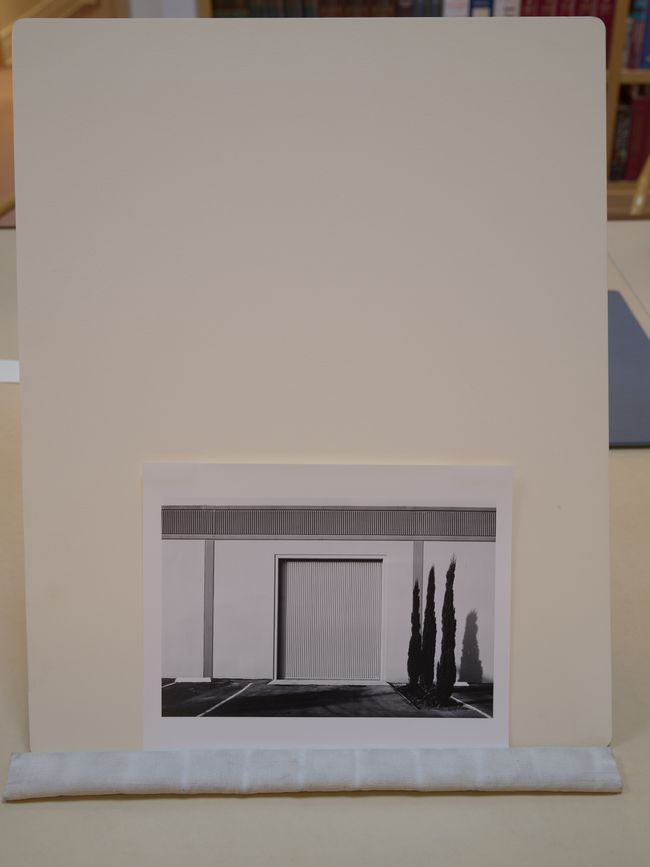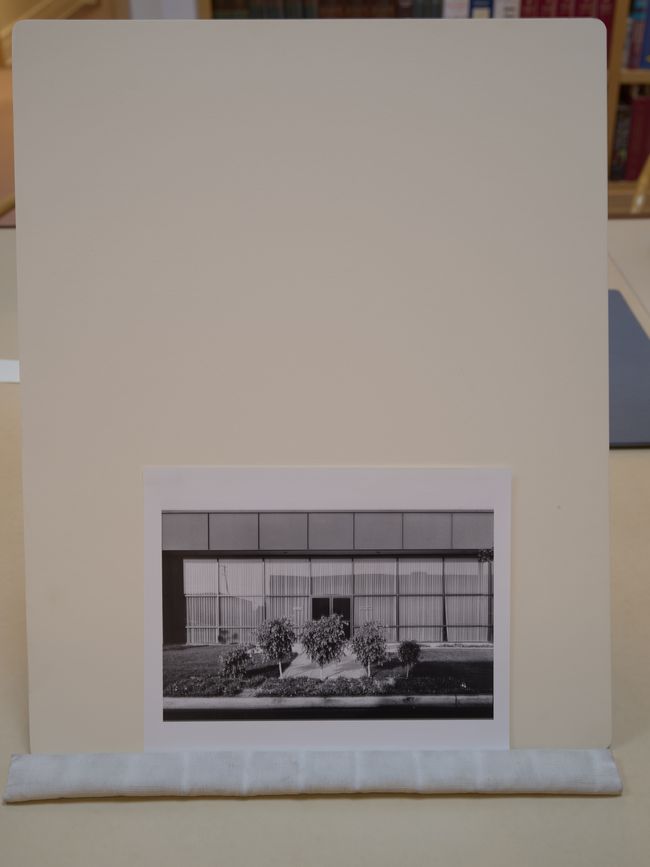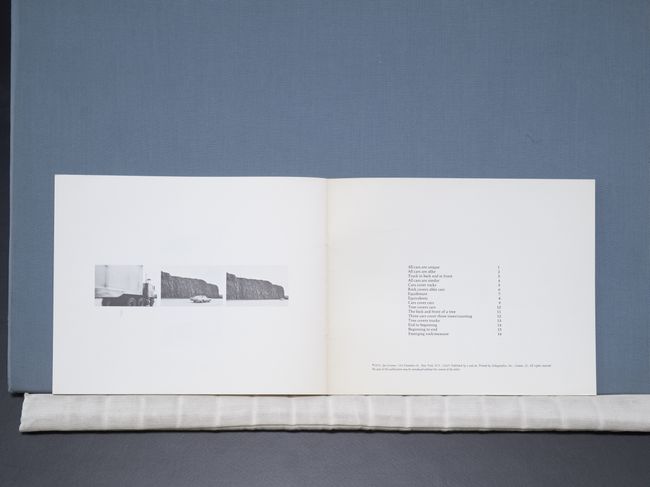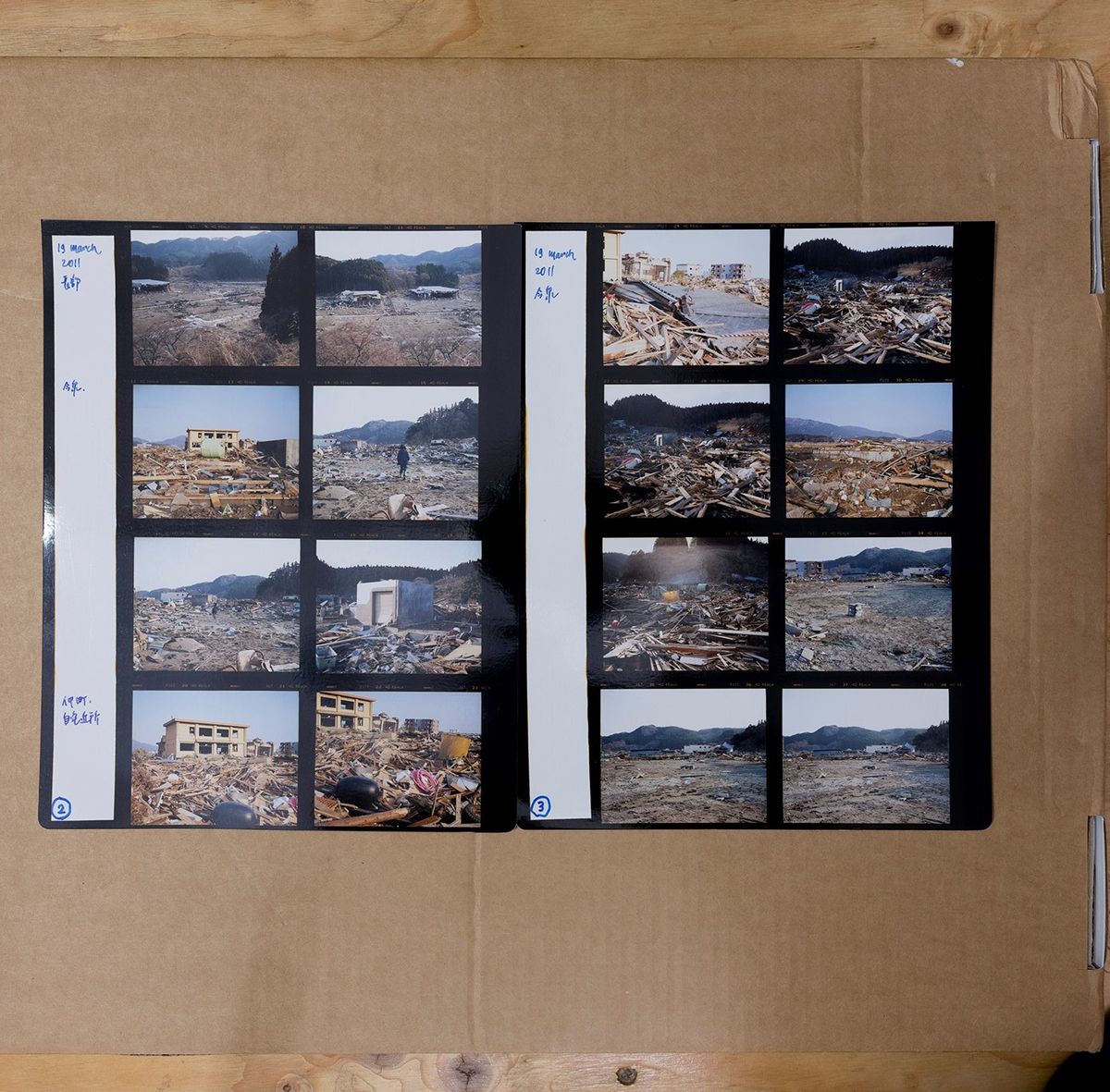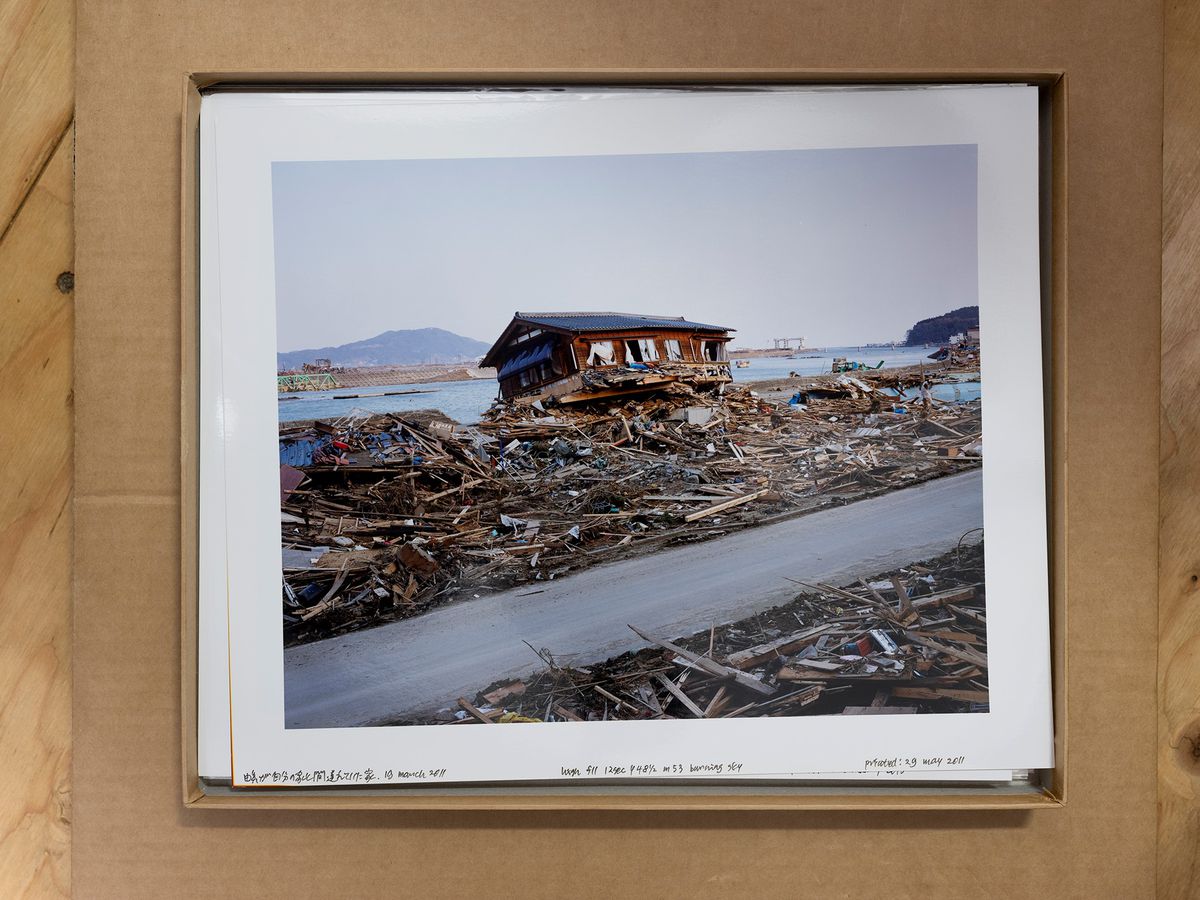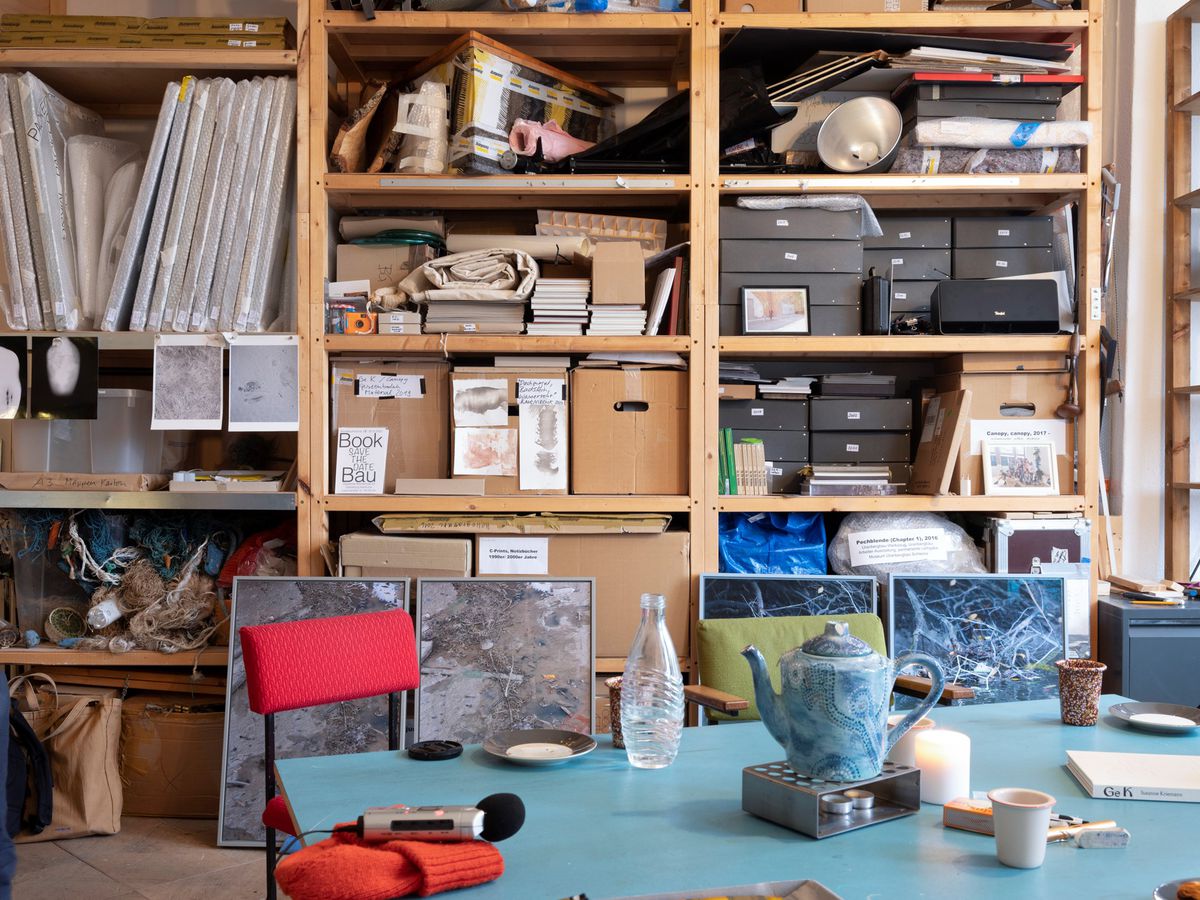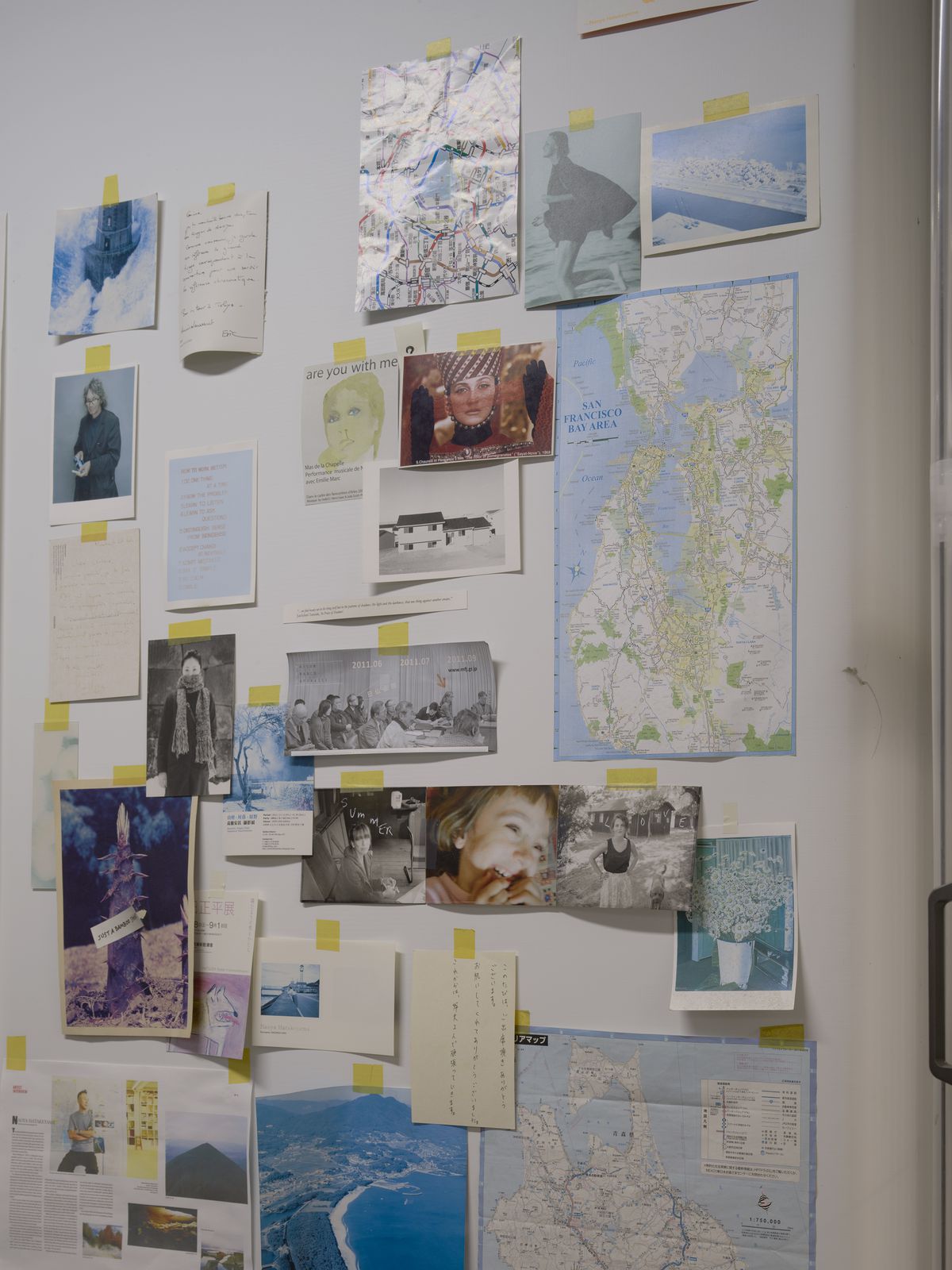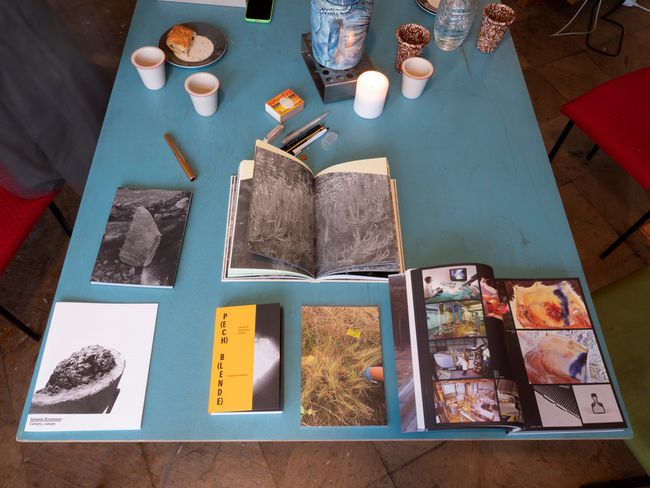Photography as Project
A conversation between Stefano Graziani and Bas Princen
The following conversation took place in January 2023 during research discussions between the curators for the exhibition The Lives of Documents—Photography as Project, which runs in our Main galleries from 3 May 2023 to 3 March 2024.





- SG
- We began thinking about an exhibition on photography following the Multidisciplinary Research Program Architecture and/for Photography organized by the CCA in 2015. Our participation in this research collaboration between scholars and practitioners led us to explore the CCA photography collection more closely. It’s a large collection supposedly focused on architecture, but we quickly discovered that many of the works do not strictly relate to buildings; they illuminate broader connections between social, natural, and built environments.
Our discovery immediately opened our thinking about “architecture photography” beyond its use as a representational tool to confirm an architect’s design ideas. Instead, we began to consider how photographers used their cameras in more intentional, subjective, or conceptual ways to approach and document the world they saw through the camera lens. We wanted to trace this question from a historical and contemporary perspective to detect possible new directions both for the discipline and the CCA Collection. - BP
- Yes, it quickly became apparent to us that the photographic projects collected by the CCA are documents that reveal how photographers approached reality to make distinct visual arguments—arguments that can help us articulate critical, urgent, and innovative positions on the changing built environment and the societies that inhabit them. Rather than using words or making a design proposal, as with architecture projects, photographers make their visual arguments by deliberately framing and organizing images. How do they choose and combine images for a project? How does its form of display—in a book, album, printed as zines or postcards, on a wall—change the way a viewer understands its argument?
Stefano Graziani, Photograph of Lewis Baltz’s The New Industrial Parks near Irvine, California: South Wall, Resources Recovery Systems, 1882 McGaw, Irvine, 1974, gelatin silver print, 20.2 × 25.4 cm. PH2001:0189 CCA. © Lewis Baltz Trust
- BP
- As photographers who have studied and contributed to the CCA Collection, we found it essential to revisit works collected by the CCA that started to challenge the definition of “architecture photography” by experimenting with either more straightforward or conceptual approaches to photography, in both cases adopting an unspectacular view of reality.
- SG
- We studied photos from the nineteenth century to the present, and ultimately decided to begin our research with projects from the 1960s and 1970s—those by Lewis Baltz, Bernd and Hilla Becher, Douglas Huebler, Luigi Ghirri, Jan Groover, Marianne Wex, Sol LeWitt, and Bruce Nauman, among others. This was a period when photography became more autonomous and accessible as an artistic medium. We might think about Graham, who considered himself an amateur photographer but still made many significant photographic works, or LeWitt’s books, which prioritize communicating a concept above image quality. This was a decisive moment in the history of photography when artists began to document everything and anything as the camera saw it, from light hitting walls to objects in their studios. We understand this as a period when photographers became liberated to develop their own rules for the medium and to declare what they saw as intrinsically valuable. Photography was no longer bound to commenting on social contexts or events; it could instead highlight a more personal or artistic way of looking at the world.
- SG
- A central concern that drove our selection of projects both from within and outside the CCA Collection is how different authors define or challenged the documentary in photography. The documentary, as it’s often understood, might appear as a way for an author to hide, to try to duplicate an image of the world by photographing things “as they are”—after all, the draw of photography is that it reproduces what’s in front of us, which is both an easy and difficult thing to do. Instead, we want to understand how the documentary incorporates the photographer’s subjective orientation to the world. For us, photography begins with an author looking at the world using the camera and lens to process and understand their experiences, what’s in front of them, and what’s important to photograph.
- BP
- One of the most unique aspects of the photography collection at the CCA is its tendency to include the most complete documentation of a project, which often is not the final work: series of archive prints, photo books and albums, and, sometimes, additional and unpublished material such as research notes, dummies, and contact prints. We noticed how the photography collection follows the general method pursued by the CCA to acquire complete archives from architecture offices, including everything from design proposals, theoretical texts, site visit reports, and representations. Everything that enters the CCA becomes, in some way, a research tool, allowing visitors like us to dig deeper and deeper into the projects.
- BP
- The use of photography as a research tool is a beautiful thought, but in practice remains ambiguous. We’re familiar with discussing architecture in terms of projects, but this isn’t necessarily the case with how we understand or talk about photography today, which is more often framed in terms of the analysis of single, final works. This is something we found difficult to deal with as photographers stepping into the role of curators because we felt torn in choosing how to frame the objects; we didn’t want to neglect that photographs are beautiful objects, but they cannot become sacred objects. We wanted to consider the intentions and ideas of the author, which do not always align with how collections and scholars present their works. We wanted to consider how objects continue to ask questions years after they are made, even if these questions don’t always align with the ones originally conceived by the artist.
Our hypothesis of photography as a project has involved an exploration of the working approaches, processes, and methodologies of photographers across various stages from conception to production, and a consideration of how their projects are presented and reproduced. We were inspired by the methodology of the CCA Collection in our curatorial approach by exhibiting photographic projects as comprehensively as possible so that viewers can appreciate the objects and be encouraged to ask questions about and from what they see. - SG
- It was important for us to understand how photographers and artists could be involved in pushing the boundaries of architecture through their visual perspectives on how cities and landscapes should evolve. The artists we researched and met with share an interest in depicting their immediate surroundings or the globalized urban world in a way that seemed familiar to them. This apparent proximity to the subject of their images allows them simultaneously to critique and capture subtleties in their environments. Tracing authors’ positions on the built environment also allowed us to broaden our definition of landscape. The authors defined landscape, like the notion of the documentary, in many ways: landscape as a social construction, landscape as built environment, landscape in relation to food production, waterscape—different aspects of the world we share.
- SG
- To get a better sense of how practicing artists conceive the openness of their projects, we decided to interview and conduct studio visits with artists across the world, meeting with Lara Almarcegui in Montreal; Jeff Wall in Vancouver; Guido Guidi and Stefano Boeri in Italy; Annette Kelm, Susanne Kriemann, Armin Linke, and Thomas Struth in Germany; Marianne Mueller in Switzerland; Aglaia Konrad in Belgium; and Naoya Hatakeyama, Takashi Homma, and Tokuko Ushioda in Japan. We also spoke to Roni Horn, Ari Marcopoulos, and Richard Misrach online.
- BP
- Initially, we wanted to access these authors’ studios and archives as an extension of our research on projects in the CCA Collection, to understand how authors deal with their archives and what had been included or left out of their projects. We followed the lives of the projects they showed us not to intrude in their histories, but to give a voice to their complex development.
Through these visits, we began to trace the authors’ unique research methodologies more clearly: their distinct ways of working, researching, and thinking about their projects. Surprisingly, we learned that for many authors, some projects we considered complete are ongoing projects that unfold parallel to the life of the author, changing and growing depending on time and experience. They often shared unpublished materials or materials that clarified an earlier approach to existing projects. It was also important for us to offer photographers the option to add new works to their projects, to ensure that institutions foster collecting practices that allow projects to change and continue.
- SG
- One of the most surprising aspects of the studio visits was realizing how many alternate
images could have been included in a project. We were always shocked when artists began
to unpack boxes from their archives and lay materials on a table. Why did they include certain things in a project and leave out others?
The process of speaking to living authors helped us overcome a lot of our predetermined perceptions about the projects we selected. When we were in the CCA Collection researching some of these projects, they were presented to us organized on carts, then returned to the archive; the research process is clear and accessible. Our perceptions of the works were beautiful—it’s always nice to have a certain idea about a project and its meaning. We carried this aura about each project before our visits and conversations, but it immediately disappeared when we spoke to the authors and was replaced by new ideas about the purpose and argument of their projects.
Even if I’m trained in making selections, I couldn’t always understand the logic of an author’s choices without their explanation. This is something we quickly learned during our studio visits—the photographic aspect of each project is a personal one, linked to the author’s experience. The author often follows a certain intuitive feeling about the role and character of photography in a project. If that feeling is captured in an image, the image works; if not, the image might be visually interesting or beautiful, but it won’t necessarily have a place in a project.
